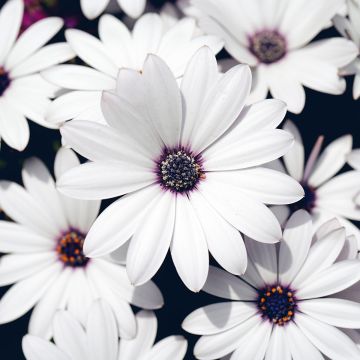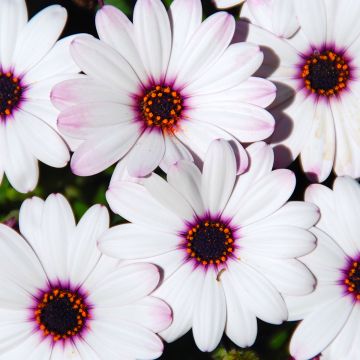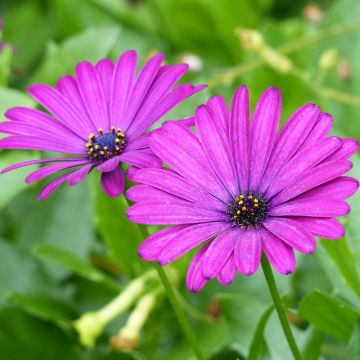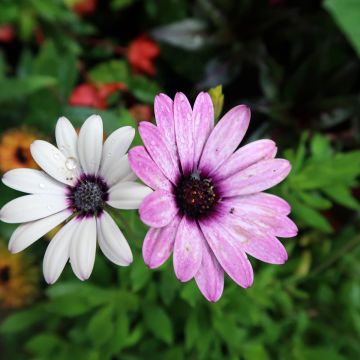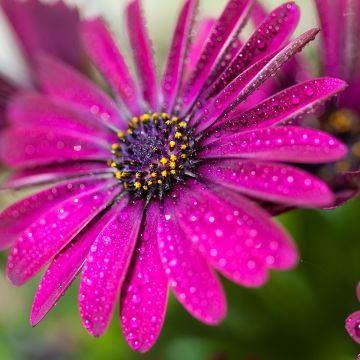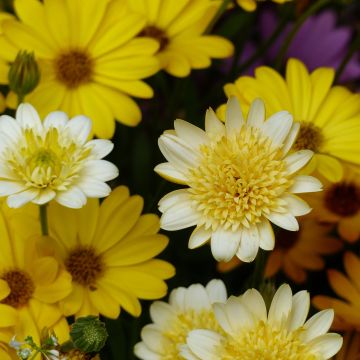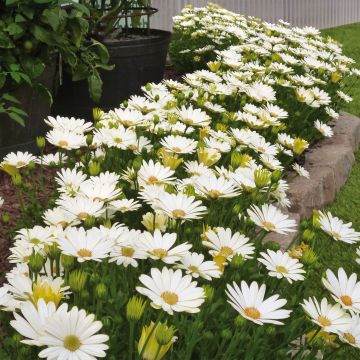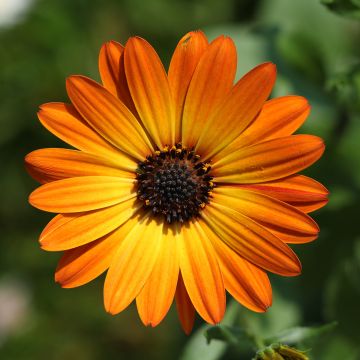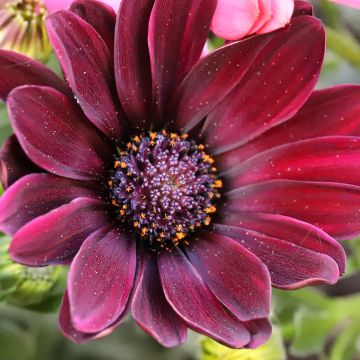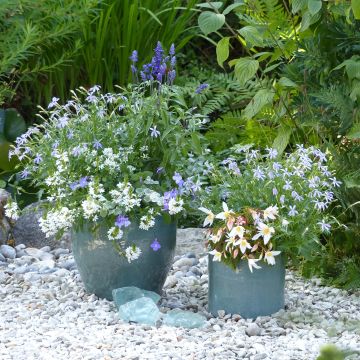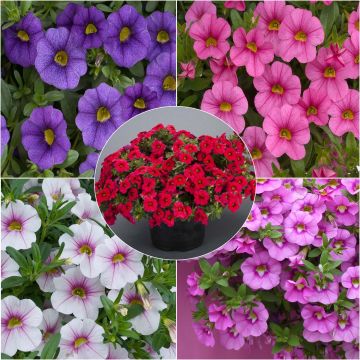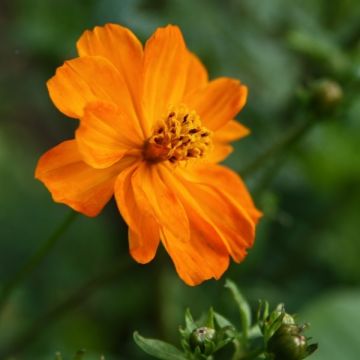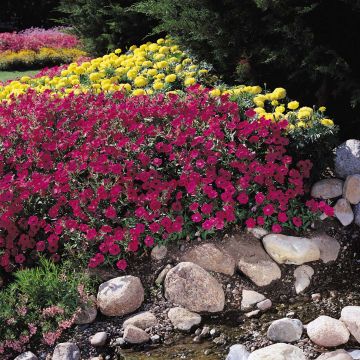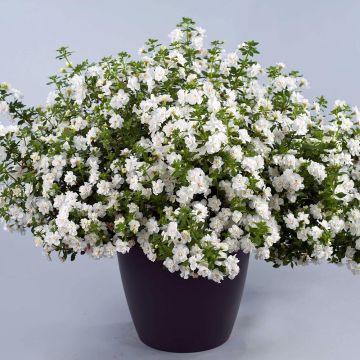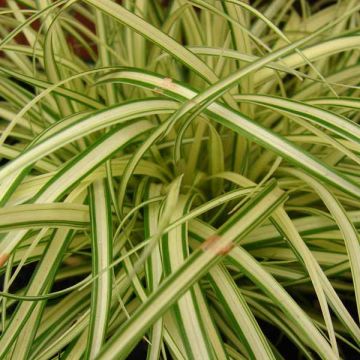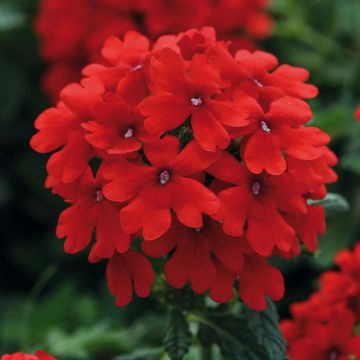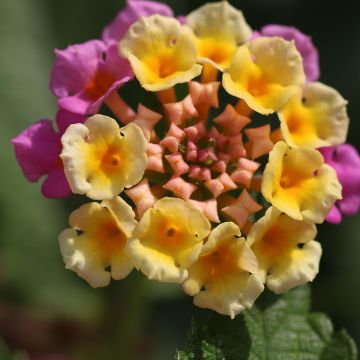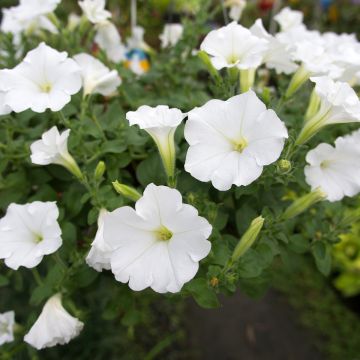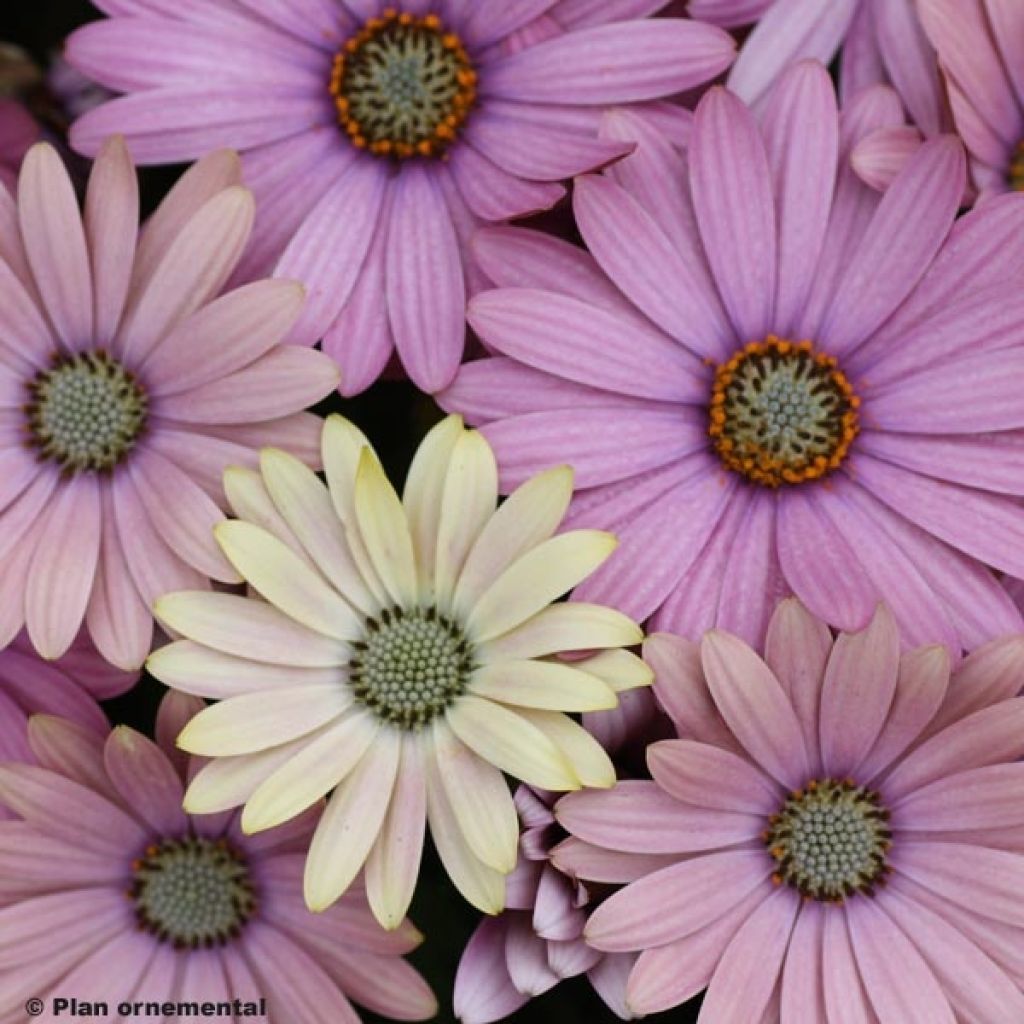

Osteospermum Cape Daisy Spring Bouquet - Cape Daisy
Osteospermum Cape Daisy Spring Bouquet - Cape Daisy
Osteospermum Cape Daisy Spring Bouquet
Cape Daisy, Blue-eyed Daisy, African Daisy
Very hardy plant, very prolific in flowers, decorative, I don't give it any fertiliser and I barely protect it outside during winter, but sheltered from the prevailing wind and preferably in the sun. Observation made on 3 potted plants over 3 years.
Thérèse, 14/08/2020
This plant carries a 6 months recovery warranty
More information
We guarantee the quality of our plants for a full growing cycle, and will replace at our expense any plant that fails to recover under normal climatic and planting conditions.
From €5.90 for pickup delivery and €6.90 for home delivery
Express home delivery from €8.90.
Delivery to Corse prohibited: UE law prohibits the import of this plant from mainland France to Corse as part of the fight against Xylella fastidiosa. Please accept our sincere apologies.
More information

Does this plant fit my garden?
Set up your Plantfit profile →
Description
The osteospermum (or oesteospernum) is a perennial plant that is slightly hardy, with shiny green foliage, typically grown as an annual in temperate climates. It tolerates drought.
The Cape Daisy 'Spring Bouquet' variety offers a range of colours from yellow to lilac pink.
Its daisy-like flowers - perfectly formed with tight, deeply cut petals and a black centre - are stunning in pots in cold regions, and in open ground in regions protected from severe frost.
Green plants measuring 4 to 8cm (2 to 3in) in plug plants of 5 small seedlings with a diameter of 2.8cm (1in) and a height of 4cm (2in). Our plants are at least eight weeks old and strong enough to be planted in open ground.
Excellent for flower pots.
Note: Please be aware that our young plug plants are professional products intended for experienced gardeners. Upon receipt, transplant and store them under cover (veranda, greenhouse, cold frame etc.) at a temperature above 14°C (57.2°F) for a few weeks before planting them outdoors once the risk of frost has definitively passed.
Report an error about the product description
Flowering
Foliage
Plant habit
Botanical data
Osteospermum
Cape Daisy Spring Bouquet
Asteraceae
Cape Daisy, Blue-eyed Daisy, African Daisy
Cultivar or hybrid
Other Osteospermum
Planting and care
Plant your osteospermum 'Spring Bouquet' in the ground after the last frost, in a sunny location. You can also plant them in pots placed in a sheltered spot, which you will take outside in May. If you plant them in the ground, wait until the frost has passed. 'Spring Bouquet' requires well-drained soil, but not necessarily very rich soil. Water moderately. In pots, regular watering is necessary in summer. Regularly remove faded flowers to prolong flowering. You can keep your osteospermums 'Spring Bouquet' by bringing them indoors under a veranda or a cold greenhouse in winter. They can tolerate a light frost, but they will only survive the winter in a sheltered location protected from severe frost.
Planting period
Intended location
Care
-
, onOrder confirmed
Reply from on Promesse de fleurs
Plug plants - Annuals
Haven't found what you were looking for?
Hardiness is the lowest winter temperature a plant can endure without suffering serious damage or even dying. However, hardiness is affected by location (a sheltered area, such as a patio), protection (winter cover) and soil type (hardiness is improved by well-drained soil).

Photo Sharing Terms & Conditions
In order to encourage gardeners to interact and share their experiences, Promesse de fleurs offers various media enabling content to be uploaded onto its Site - in particular via the ‘Photo sharing’ module.
The User agrees to refrain from:
- Posting any content that is illegal, prejudicial, insulting, racist, inciteful to hatred, revisionist, contrary to public decency, that infringes on privacy or on the privacy rights of third parties, in particular the publicity rights of persons and goods, intellectual property rights, or the right to privacy.
- Submitting content on behalf of a third party;
- Impersonate the identity of a third party and/or publish any personal information about a third party;
In general, the User undertakes to refrain from any unethical behaviour.
All Content (in particular text, comments, files, images, photos, videos, creative works, etc.), which may be subject to property or intellectual property rights, image or other private rights, shall remain the property of the User, subject to the limited rights granted by the terms of the licence granted by Promesse de fleurs as stated below. Users are at liberty to publish or not to publish such Content on the Site, notably via the ‘Photo Sharing’ facility, and accept that this Content shall be made public and freely accessible, notably on the Internet.
Users further acknowledge, undertake to have ,and guarantee that they hold all necessary rights and permissions to publish such material on the Site, in particular with regard to the legislation in force pertaining to any privacy, property, intellectual property, image, or contractual rights, or rights of any other nature. By publishing such Content on the Site, Users acknowledge accepting full liability as publishers of the Content within the meaning of the law, and grant Promesse de fleurs, free of charge, an inclusive, worldwide licence for the said Content for the entire duration of its publication, including all reproduction, representation, up/downloading, displaying, performing, transmission, and storage rights.
Users also grant permission for their name to be linked to the Content and accept that this link may not always be made available.
By engaging in posting material, Users consent to their Content becoming automatically accessible on the Internet, in particular on other sites and/or blogs and/or web pages of the Promesse de fleurs site, including in particular social pages and the Promesse de fleurs catalogue.
Users may secure the removal of entrusted content free of charge by issuing a simple request via our contact form.
The flowering period indicated on our website applies to countries and regions located in USDA zone 8 (France, the United Kingdom, Ireland, the Netherlands, etc.)
It will vary according to where you live:
- In zones 9 to 10 (Italy, Spain, Greece, etc.), flowering will occur about 2 to 4 weeks earlier.
- In zones 6 to 7 (Germany, Poland, Slovenia, and lower mountainous regions), flowering will be delayed by 2 to 3 weeks.
- In zone 5 (Central Europe, Scandinavia), blooming will be delayed by 3 to 5 weeks.
In temperate climates, pruning of spring-flowering shrubs (forsythia, spireas, etc.) should be done just after flowering.
Pruning of summer-flowering shrubs (Indian Lilac, Perovskia, etc.) can be done in winter or spring.
In cold regions as well as with frost-sensitive plants, avoid pruning too early when severe frosts may still occur.
The planting period indicated on our website applies to countries and regions located in USDA zone 8 (France, United Kingdom, Ireland, Netherlands).
It will vary according to where you live:
- In Mediterranean zones (Marseille, Madrid, Milan, etc.), autumn and winter are the best planting periods.
- In continental zones (Strasbourg, Munich, Vienna, etc.), delay planting by 2 to 3 weeks in spring and bring it forward by 2 to 4 weeks in autumn.
- In mountainous regions (the Alps, Pyrenees, Carpathians, etc.), it is best to plant in late spring (May-June) or late summer (August-September).
The harvesting period indicated on our website applies to countries and regions in USDA zone 8 (France, England, Ireland, the Netherlands).
In colder areas (Scandinavia, Poland, Austria...) fruit and vegetable harvests are likely to be delayed by 3-4 weeks.
In warmer areas (Italy, Spain, Greece, etc.), harvesting will probably take place earlier, depending on weather conditions.
The sowing periods indicated on our website apply to countries and regions within USDA Zone 8 (France, UK, Ireland, Netherlands).
In colder areas (Scandinavia, Poland, Austria...), delay any outdoor sowing by 3-4 weeks, or sow under glass.
In warmer climes (Italy, Spain, Greece, etc.), bring outdoor sowing forward by a few weeks.

































